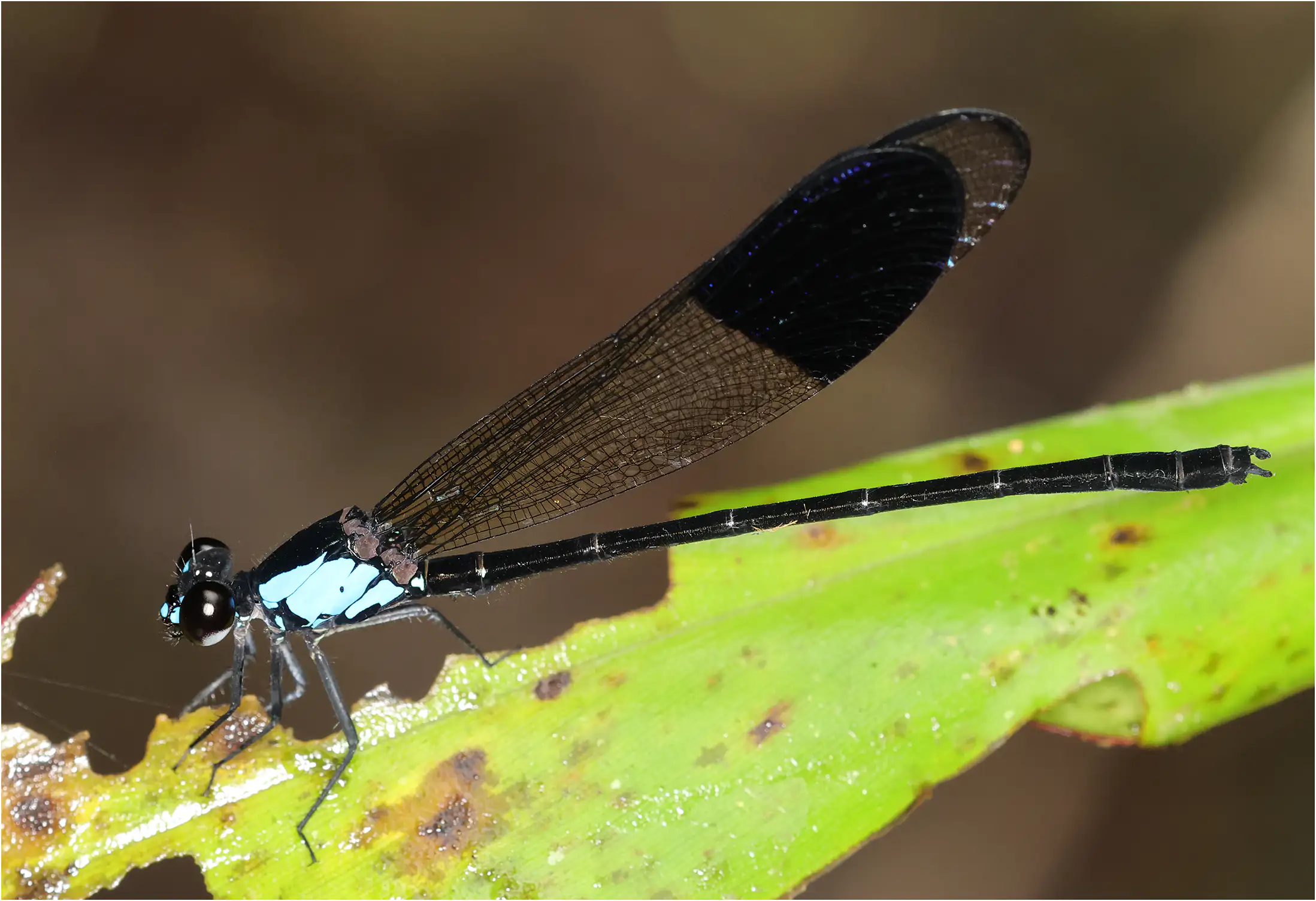
Euphaea impar male is a magnificent Euphaeidae that is difficult to highlight in a photo; its thorax is largely light blue (but darker than here), and the tips of its hind wings are very dark with iridescent reflections, shimmering black, Selys tells us (1) (lighter than here). It is therefore necessary to balance between the light area of the thorax and the dark area of the wings, which cameras do much less correctly than our eyes.
It is also known to be difficult to approach (2), taking shelter higher and higher in the vegetation.
The photos below illustrate the problem well; if we want to see the iridescence of the wings appear, the thorax appears pale. If we want to find the true shade of blue of the thorax, the apex of the wings is dark…
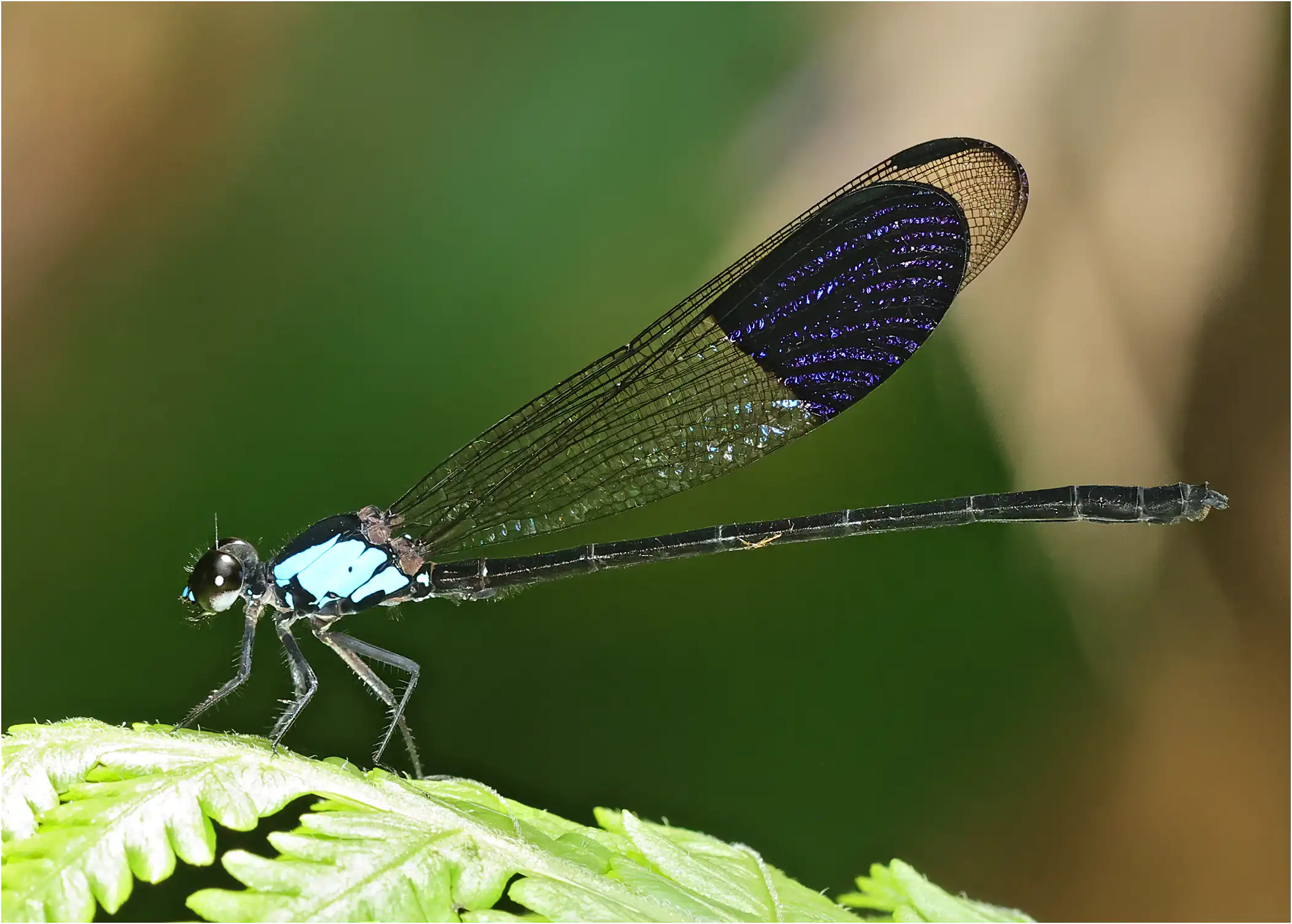
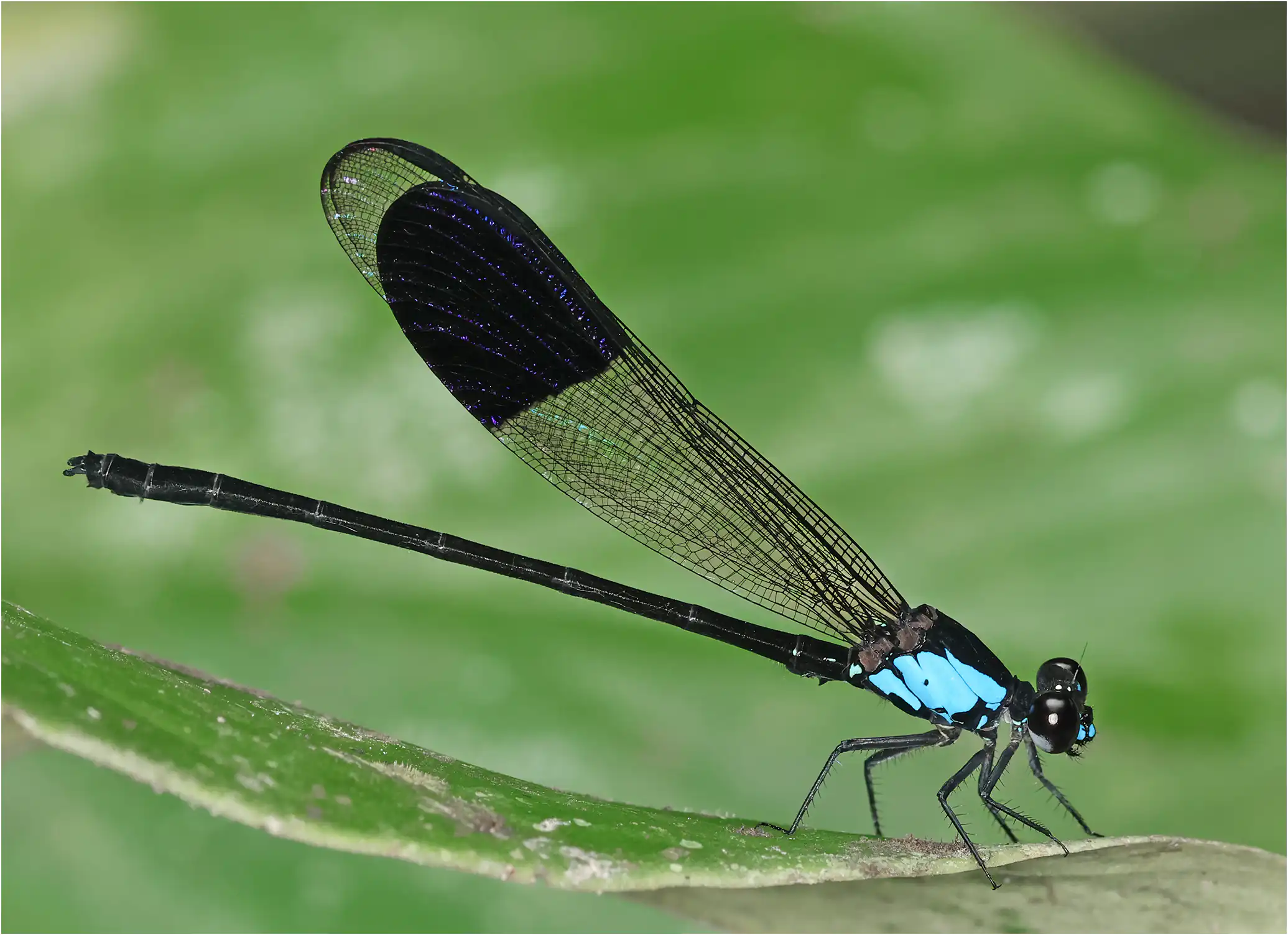
In Borneo it can only be confused with E. ameeka, but while the latter has the same blue thorax, its wings are almost hyaline.
In Ngiam and Ng (4), we read that its total size is 34 to 38 mm, which is in good agreement with the abdomen of 30 mm given by Selys (1).
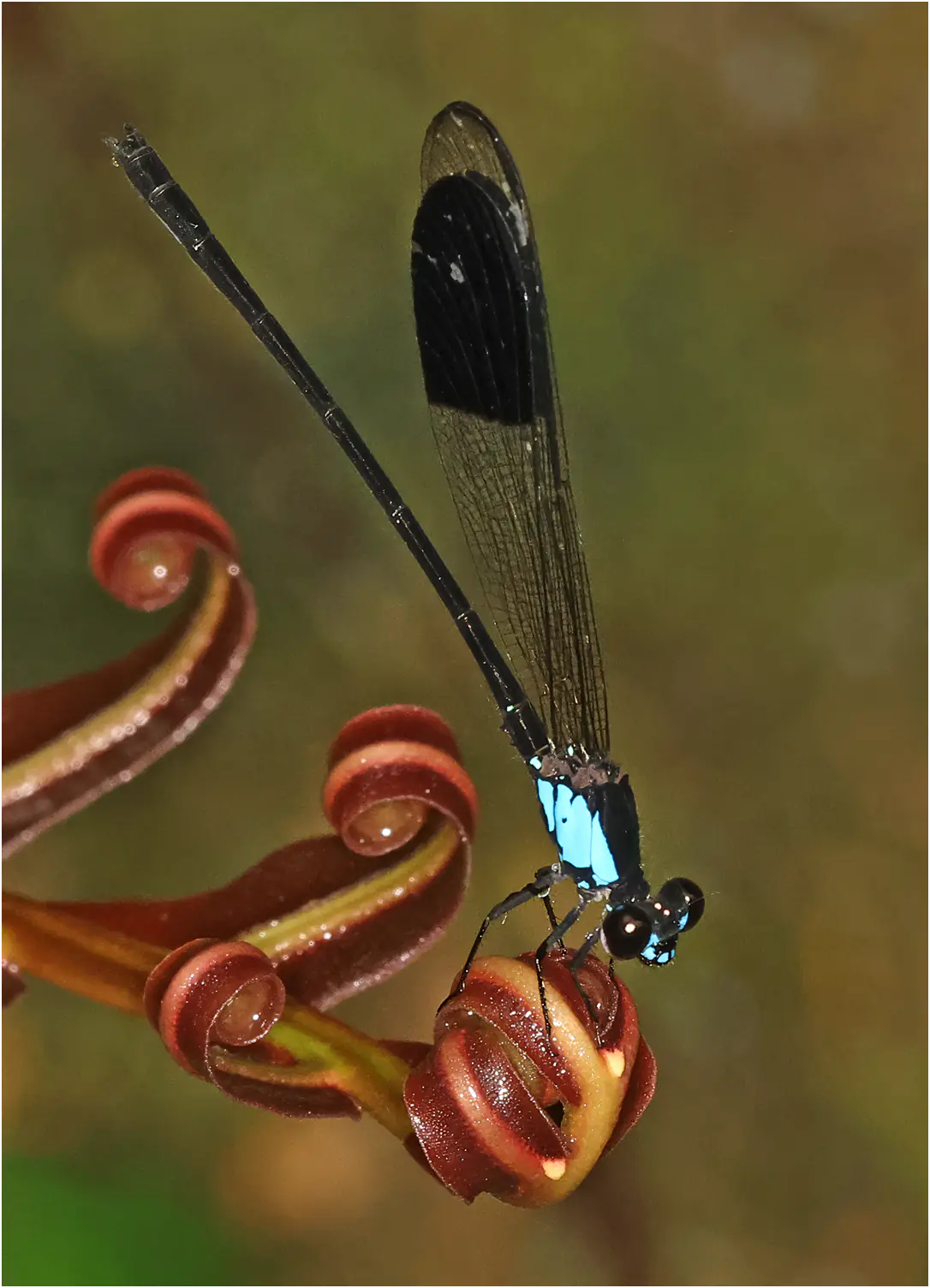
When I was sorting through the photos to choose the ones that would illustrate this page, I hesitated, but the support seemed so beautiful to me in the field, that I couldn’t resist. Unfortunately, the photo doesn’t do justice to either the dragonfly or these sumptuous fiddleheads.
It thrives on small rivers in the forest, in fairly open areas, however, letting in a few rays of sunlight, a bit like our European Calopteryx. Their larvae differ from those of all other zygoptera in that, while they typically have three gill lamellae, they also have seven pairs of gills distributed along the abdomen.
The males are territorial and tend to stay in the sun, and the iridescence of their wings is more of a way of warning potential competitors of their presence than of seducing females.
These females are also very discreet, probably because they live in the forest and only approach water to lay their eggs. Mating scenes are therefore rarely observed.
Its distribution area extends from southern Thailand across the entire Malaysian Peninsula (and therefore Singapore) to Borneo and Sumatra.
IUCN Red List .
I had already met it in Peninsular Malaysia .

Below is a young male encountered under a river bridge, in a slightly more open area. The identification is only likely, as I don’t know how to differentiate them from E. ameeka at this age. Since we’ve never encountered the latter, a young male Euphaea impar is most likely.
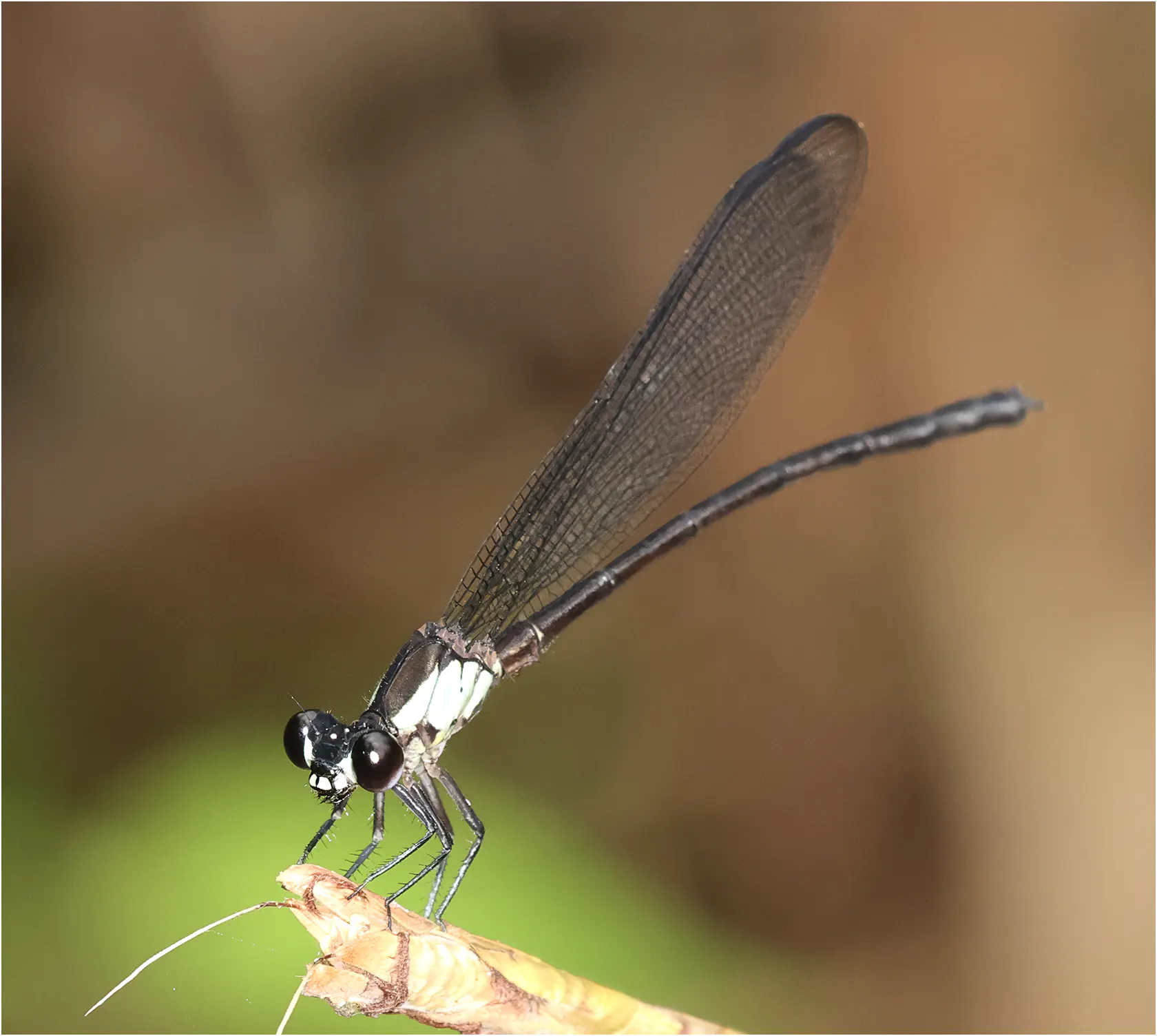
Etymology (4)
Euphaea refers directly to the name of the family to which this genus belongs, the Euphaeidae. For the latter, which the Anglo-Saxons call Satinwings, the etymology is less certain. Selys (1840) would have combined the Greek eu meaning good, true and the term phaûos which means bright , which indeed applies to the wings of many members of this family.
Impar ; in Latin impar means, strange , unequal . Selys would have used this term, because all the other species then known had a dark body and colored and iridescent wings (a bit like the opposite of our species).
The Anglo-Saxons call it Blue-sided satinwings.
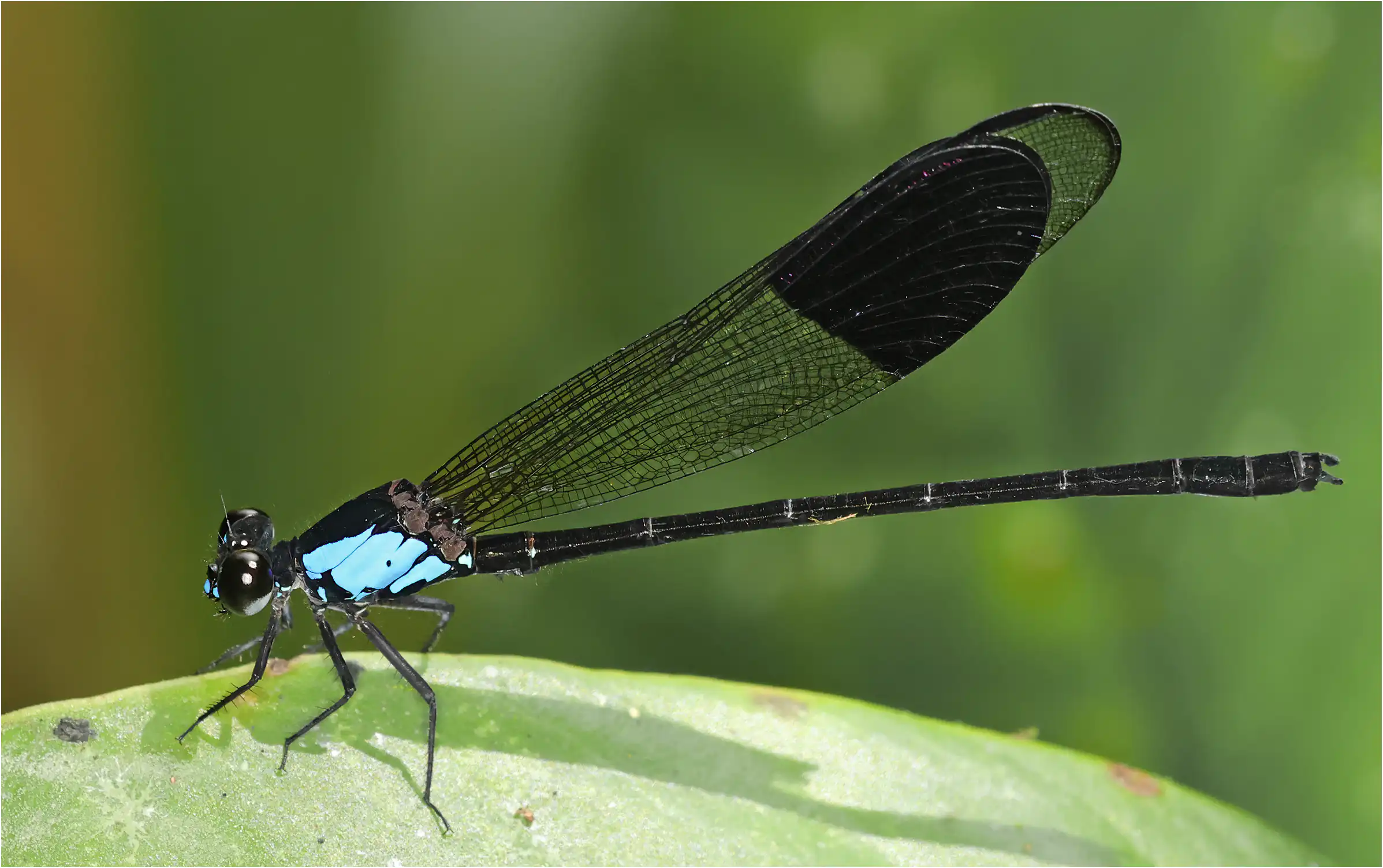
1- Selys-Longchamps, Michel-Edmond. (1859). Additions au synopsis des Caloptérygines. Bulletins de l’Académie royale des sciences, des lettres et des beaux-arts de Belgique, 7, 437–451. P. 441.
2- A. F. S. L. Lok and A. G. Orr – THE BIOLOGY OF EUPHAEA IMPAR SELYS (ODONATA: EUPHAEIDAE) IN SINGAPORE – NATURE IN SINGAPORE 2009 2: 135–140 Date of Publication: 23 March 2009
3- Van Tol & Norma-Rashid – Descriptions and records of Malesian Odonata, 3 – Tijdschrift voor Entomologie 138: 131-141, figs. 1-40 – Published 15 June 1995.
4- Robin Ngiam & Marcus Ng – A photographic guide to the Dragonflies and Damselflies of Singapore – John Beaufoy Publishing – 2022